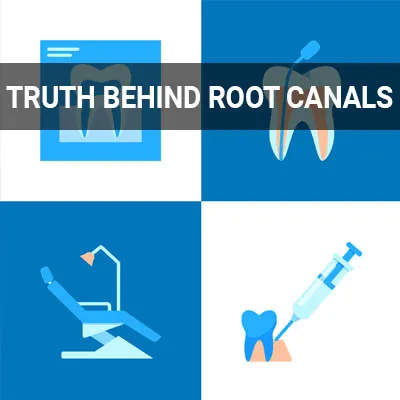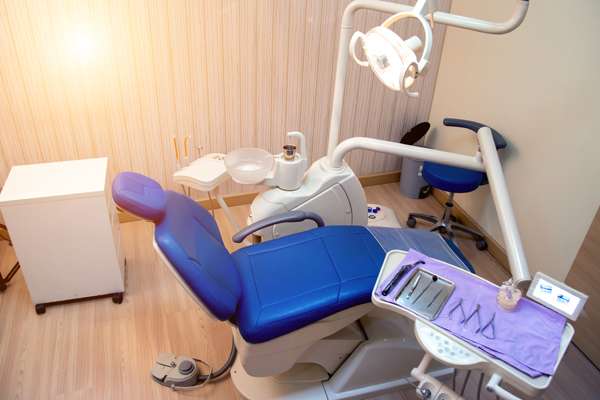Types of Dental Root Fractures Livermore, CA
Each layer of the tooth plays an important role in keeping your mouth healthy and happy. Whether it be from injury or general wear and tear, a dental root fracture can cause discomfort and pain. The sooner your tooth receives treatment, the better the outcome will be.
If you suspect that you have a fractured tooth, do not hesitate to protect your oral health. Our team at Livermore Dental Spa in Livermore and the surrounding area can help. Contact us at (925) 344-3993 to learn more about our services or schedule an appointment.
Layers of the Teeth
Teeth consist of several layers and include four types of tissues. Enamel, dentin, and cementum make up the hard tissues. The pulp, which contains the nerves, blood vessels, and connective tissues, is soft tissue.
The part of the tooth that is visible in the mouth is called the crown. The crown consists of a hard outer shell called enamel. The tooth root spreads down from the crown into the gum line and jawbone, holding your tooth in place.
The second layer is called the dentin, which contains the pulp chamber at the tooth center. Extending down from the pulp chamber and into the jawbone is the root canal, a passageway for nerves and blood vessels. When root fractures extend this far, it is important to see a dentist for treatment.
“Teeth consist of several layers and include four types of tissues.”
Root Fracture Types
Root fractures occur when the crack involves the dentin, cementum, and pulp. They typically separate into two types—oblique and vertical. A vertical root fracture involves the entire length of the tooth or just a section of it. An oblique root fracture occurs when the crack runs along the tooth length. Vertical and oblique root fractures require different treatment approaches with varying levels of success.
A fracture that goes deep into the layers of the tooth can affect the health of the entire tooth and even the ones surrounding it. A root fracture exposes the inner layers of the tooth to bacteria, leading to an infection. An untreated infection can lead to extreme discomfort while chewing and sensitivity to hot and cold foods.
“Root fractures are when the crack involves the dentin, cementum, and pulp.”
Oblique Fractures
An oblique fracture runs across the length of the tooth and presents in three categories.
Supragingival
A crack that occurs across the tooth length above the gum line is called an oblique supragingival fracture. While there may not be immediate discomfort, it can lead to an infection if left untreated. In addition, since this type of fracture typically involves the tooth surface, continuing to chew with this fracture type will eventually exacerbate the condition.
Subgingival
An oblique subgingival fracture is when the crack involves more of the tooth. It may even extend down the root, below the gum line, and into the jawbone. You can expect intense pain with this type of fracture to the point where it will be hard to eat or speak. This kind of root fracture can also involve the nerves of the tooth.
Oblique Root Fracture
An oblique root fracture is a crack limited to the roots of the teeth, leaving the top portion of the tooth unaffected. The fractured root presents totally below the gum line and sometimes totally within the bone. The location of this type of fracture will determine whether or not the tooth can be restored.
“An oblique fracture runs across the length of the tooth and presents in three categories.”
Check out what others are saying about our dental services on Yelp: Types of Dental Root Fractures in Livermore, CA
Vertical Fractures
Apical fractures
Vertical apical fractures occur at the apex or tip of the tooth root. Many patients with vertical apical fractures ask for extraction because of the severe pain it causes. The severe pain is a result of tooth fragments placing pressure on the bone. Root canal therapy can help alleviate the pain, but some cases may require tooth extraction. Patients can discuss the best treatment option with our dentist.
Furcation fractures
When the roots of a tooth separate, a vertical furcation fracture occurs. This type of fracture almost always affects the tooth's nerves. Patients affected by this fracture experience pain and difficulty with simple tasks like eating and speaking. Root canal therapy and a crown can usually save teeth affected by vertical furcation fractures as the tooth does not generally split completely.
Root Fractures
A vertical root fracture happens when part of the tooth root breaks off. This type of damage is not common and usually occurs in teeth with endodontic treatment like root canal therapy. An apicoectomy may save the tooth if the vertical root fracture is short. Extraction is usually the common treatment; however, various studies have attempted to reunite fractured roots with varying success rates.
“Vertical apical fractures occur at the apex or tip of the tooth root.”
Questions Answered on This Page
Q. What are the types of vertical fractures?
Q. What are the layers of the teeth?
Q. What are the types of dental root fractures?
Q. What are the types of oblique fractures?
People Also Ask
Q. How common are root canals?
Q. What happens during root canal treatment?
Q. What if a crown or root canal cannot save my cracked tooth?
Q. Do I need a tooth extraction?
Frequently Asked Questions
Q. How does a root fracture happen?
A. Root fractures can result from a traumatic injury or can happen in teeth with previous procedures like a root canal or crown. Healthy teeth can also be subject to cracks by chewing on hard materials and foods like popcorn kernels. Your treatment will depend on the complexity of the situation and the long-term prognosis of the tooth.
Q. What are the different types of root fractures?
A. There are vertical and oblique or horizontal fractures. Oblique fractures run side to side along the tooth and only make up about 3% of dental injuries. Vertical fractures start at the root and progress up toward the crown.
Q. What are some of the symptoms of root fracture?
A. Not all root fractures present symptoms, leaving them undetected if you do not see the dentist regularly. When there are symptoms, they can include discomfort or pain when biting or chewing food, sensitivity to hot and cold, and gum swelling. These symptoms may also come and go.
Q. How are root fractures treated?
A. The severity of the crack will determine the treatment plan. Sometimes, you can stabilize the tooth, but you will need a root canal if the fracture reaches the pulp. In some cases, the root fracture may be so severe that you will need a tooth extraction.
Q. What happens after treatment for a tooth fracture?
A. Following the treatment, the patient will need to be careful with what they eat. This way, the tooth can continue to heal properly. We will also go over the necessary care techniques the patient can take at home to further the recovery process.
Endodontic Terminology
Call Us Today
Fractures are common and painful problems that require treatment as quickly as possible. Livermore Dental Spa can help find the right treatment option for you. Call us at 925-344-3993 to schedule an appointment or learn more about our services.
Helpful Related Links
- American Dental Association (ADA). Glossary of Dental Clinical Terms. 2024
- American Academy of Cosmetic Dentistry® (AACD). Home Page. 2024
- WebMD. WebMD’s Oral Care Guide. 2024
About our business, license, and website security
- Livermore Dental Spa was established in 2023.
- We accept the following payment methods: American Express, Cash, Discover, MasterCard, and Visa
- We serve patients from the following counties: Alameda County, Contra Costa County and San Joaquin County
- We serve patients from the following cities: Livermore, Alameda, Pleasanton, Dublin, Ulmar, Tracy, San Ramon, Danville, Mountain House and Castro Valley
- CA (License #101519). View License Information and Specifics
- National Provider Identifier Database (1679095681). View NPI Registry Information
- Healthgrades. View Background Information and Reviews
- Norton Safe Web. View Details
- Trend Micro Site Safety Center. View Details
Back to top of Types of Dental Root Fractures











